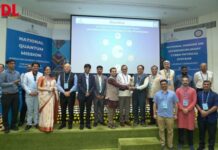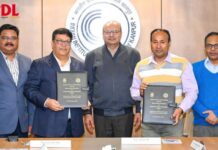
The Gujarat government has earmarked Rs 59,999 crore for the education sector in the state budget for the financial year 2025-26, presented by Finance Minister Kanu Desai on Thursday. Despite the significant allocation, the budget does not introduce any new schemes for education but continues funding for existing initiatives.
The total budget for the state stands at Rs 3.7 lakh crore, with a focus on education, infrastructure, healthcare, and economic development. Among the key education schemes receiving continued financial support are the Namo Lakshmi Yojana, Namo Saraswati Vigyan Sadhana Yojana, Mukhya Mantri Yuva Swavalamban Yojana, and various merit-based scholarships.
Declining Enrollment and Institutional Shifts
The Social Economic Review 2024-25, released alongside the budget, highlights a decline in the number of primary schools in Gujarat over the past five years. The number of primary schools has decreased from 45,315 in 2019-20 to 44,288 in 2023-24, with a notable reduction in schools operated by local bodies. Correspondingly, student enrollment has dropped from 86.14 lakh to 78.47 lakh over the same period.
In contrast, the number of technical institutions has grown from 236 in 2020-21 to 271 in 2024-25. However, the total number of sanctioned seats in these institutions has declined from 1.85 lakh to 1.22 lakh, indicating shifting dynamics in higher and technical education demand. Similarly, while the number of diploma institutions has increased, student enrollment has dropped from 1.87 lakh to 1.17 lakh between 2020-21 and 2024-25.
Investments in Higher and Technical Education
A major announcement in the budget is the establishment of the Gujarat Institute of Technology (GIT), modelled after the Indian Institutes of Technology (IITs). The government has allocated Rs 100 crore for the institute, which aims to develop expertise in emerging fields such as green energy, semiconductors, fintech, and aerospace.
Additionally, a Demonstrative Artificial Intelligence Lab will be set up at LD College of Engineering in Ahmedabad, along with AI labs at six other government technical institutions to enhance research and innovation capabilities.
Streamlining Admissions and Enhancing Access
The Gujarat Common Admission Service (GCAS), launched in 2024, has been highlighted as a key achievement in the budget. The portal aims to streamline the admission process for government universities, making registration and course selection more accessible to students across disciplines.
The government’s education focus aligns with the broader vision of Viksit Bharat 2047, aiming to modernise Gujarat’s learning infrastructure and prepare students for future job markets.
Broader Budgetary Focus
Beyond education, the state budget allocates substantial resources to infrastructure, healthcare, and economic growth. Investments include Rs 5,000 crore for road expansion, Rs 4,000 crore for smart city initiatives, and Rs 3,500 crore for urban housing projects. The healthcare sector has received Rs 40,000 crore, with an emphasis on AI-based diagnostics in government hospitals and expanded coverage under the Ayushman Bharat Yojana.
Women’s empowerment remains a priority, with Rs 15,000 crore directed towards financial independence, education, and safety initiatives for women. Similarly, Rs 10,000 crore has been allocated to skill development and startup incentives, particularly in IT, AI, and renewable energy sectors, fostering entrepreneurship and job creation.
The agriculture sector has been allotted Rs 25,000 crore to support irrigation, smart farming, and crop insurance. Additionally, Gujarat has committed Rs 12,000 crore to renewable energy projects, focusing on solar, wind, and hydrogen power, further strengthening the state’s position as a leader in sustainable energy.
Also Read: Uttar Pradesh Budget 2025 Allocates 13 Percent for Education
Symbolism in Budget Presentation
In a departure from the traditional budget presentation style, Finance Minister Desai carried the budget document in a red-coloured ‘pothi’ (ledger book) adorned with Warli paintings and Ahir embroidery, showcasing Gujarat’s rich tribal and folk artistry. The Ashoka Stambh was also prominently featured, reflecting national pride and governance.





















